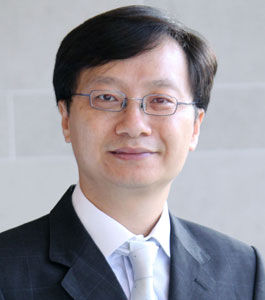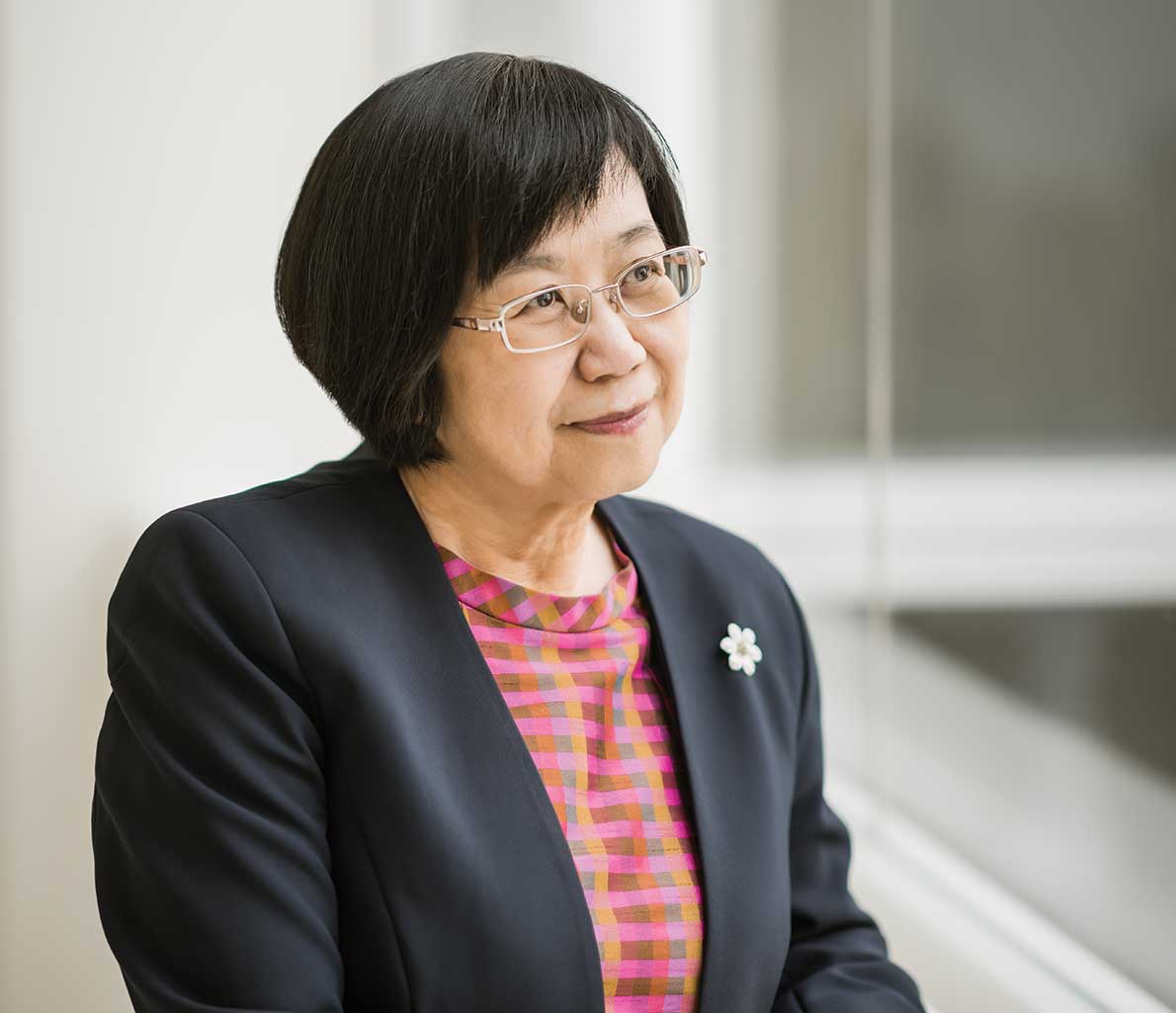Arming Nurses With Skills And Knowledge, Flowing Patients From Hospital To Community

"There are more than 42,000 nurses in our healthcare sector today, making up 42 per cent of the total healthcare workforce. Nurses are the backbone of the sector, and this means we need nurses to be critical thinkers with the ability to perform clinical reasoning, assessment and judgement." — Ms Tan Soh Chin, Chief Nursing Officer
Through her 45 years in the nursing profession, Chief Nursing Officer (CNO) Tan Soh Chin has never said “no” to new experiences. That included taking on the challenges of her current position as Singapore’s CNO at the Ministry of Health (MOH).
When the previous CNO Pauline Tan moved to Yishun Community Hospital, Ms Tan succeeded her after pondering for a long time. “Taking the lead as CNO was part of my ‘national service’ to contribute to the nursing profession,” she explains. Ms Tan was appointed in January 2015.
From the time she was a trainee nurse at age 18, Ms Tan worked for healthcare institutions in the public and private sectors. After 10 years at a public hospital, she moved to the private sector, spending a year at a medical specialist centre as a clinic nurse-cum-administrator to a senior surgeon. She ran his clinics and also assisted him in the operating theatre.
Missing nursing and the clinical environment in a hospital setting, Ms Tan returned to public service in 1985—this time to the National University Hospital (NUH), which was then under the final phase of construction and commissioning.
“Working in a hospital that started from scratch was a good experience. It was at NUH that I found ample opportunities to grow and become more ‘clinically seasoned’,” says Ms Tan, who spent 16 years at NUH.
Another turning point for her came when she joined KK Women’s and Children’s Hospital as its Assistant Director of Nursing. She stayed there for 14 years before she was seconded to the MOH.
With Singapore’s evolving population demographic and healthcare needs, Ms Tan believes that nurses with the clinical knowledge and skills to analyse, identify and treat are no longer a good-to-have but a must-have. “There are more than 42,000 nurses in our healthcare sector today, making up 42 per cent of the total healthcare workforce. Nurses are the backbone of the sector, and this means we need nurses to be critical thinkers with the ability to perform clinical reasoning, assessment and judgement,” she says.
She is confident that the proportion of well-educated and highly- skilled registered nurses in the workforce will grow at a brisk pace. This is attributable in part to the expanding intake for the Bachelor of Science (Nursing) programme at NUS Nursing. In 2018, 313 A-level students, polytechnic graduates and mid-career professionals were admitted into the programme. This is an increase of 33 per cent over the number of students admitted the year before, and represents a more-than-sixfold increase since the school took in its first batch of nursing students in 2006.
“We are very encouraged to see nursing become a career of choice for high-calibre students,” she says. “This is a result of the school’s effort and investment in developing its programme to groom and train future nurses.”
The increased interest from millennials in a nursing career comes at the right time as the government plans to recruit 30,000 more healthcare workers—including highly trained nurses and doctors— in primary and community health settings by 2020 to care for Singapore’s ageing population.

The next few years will see the government focusing on reviewing nursing education to promote lifelong learning, says Ms Tan.
VISION FOR THE PROFESSION
Nurses enjoy diverse career advancement and upgrading opportunities today, thanks to two key initiatives rolled out by the MOH to retain nurses in recent years.
One of these is the National Nursing Task Force’s CARE package in 2014. The Task Force, set up in 2012 with the aim of developing and strengthening nursing in Singapore, addressed fundamentals such as career structure and nursing autonomy, and looked into whether nurses were practising to the full extent of their education and training.
One of the subcommittees of the Task Force, which was chaired by Ms Tan, formulated policies on career structure and nursing salaries, including reviews and increments. Policies were also enacted to ensure adequate training funds for nursing education, as well as make certain the nursing career structure is progressive and responsive, with more opportunities for professional growth and able to meet nurses’ career aspirations.
At the same time, a marketing communications campaign, “Care To Go Beyond”, was initiated by the MOH to enhance the image of nursing, attract more locals into the profession, acknowledge nurses’ contributions and increase the public’s understanding and respect of the profession.
In the face of demographic changes with the nation’s growing ageing population, there is a need to shift care from hospital to community to bring care closer to home. With more resources allocated to the community care sector, a well-trained and clinically competent nursing workforce is thus required to spread across all sectors to manage patients at every step of their life stages from cradle to grave, says Ms Tan. She sees nurses as a crucial “link and interface on the ground” for the post-discharge complex cases from the hospitals who need home care or day care, a third of which is made up of end-of-life patients.
A well-trained community nursing workforce is also key to managing the frail elderly at the neighbourhood Senior Activity Centres, which now come under the MOH with the merger of the social and health sectors. Together with the community partners, these nurses attend to the seniors with chronic diseases who need care, manage them before they fall down or fall ill, and help them age well in the community.
“There is thus a need for nurse leaders to understand the perspectives of both acute and community nursing, so that they can then take on broader leadership roles and lead care across the acute and community care sectors,” says Ms Tan.
In March 2019, the Singapore Nurse Leaders Programme (SNLP), jointly developed by the MOH and Healthcare Leadership College, commenced to develop future nurse leaders with a better understanding of the community care sector and a more holistic view of the healthcare landscape. The SNLP was one of the recommendations of the Future Nursing Career Review Committee, formed in 2017, to strengthen community nursing.
Of the 42,000 nurses under the Singapore Nursing Board register, about 13 per cent are not active. Ms Tan and her colleagues from the MOH hope to bring back this group of nurses through a programme called “Return to Nursing”. This is challenging as those who left nursing for more than five years and who want to return to the profession must be trained to equip themselves in the latest skills and knowledge before they can practise nursing again for safety reasons, she explains.
With much work done on nursing retention, recognition and autonomy, Ms Tan says that the next few years will see the government focusing on the competency slice of the pie. Education is the biggest-ticket item that remains key to the MOH’s thrusts as it is part of its longer-term goal to ensure that the quality of the workforce will not be affected downstream, she says.
The review of nursing education will go in tandem with the government’s SkillsFuture drive, which promotes lifelong learning via modular, stackable and part-time training, says Ms Tan. The main thrust is to recognise both formal education from the tertiary institutions and the informal training of nurses run by the healthcare clusters and institutions, many of which have their own structured training road maps, she adds.
“In the future, we plan to develop an accreditation system as well as competency frameworks to recognise the skills and competencies attained by a nurse at the workplace,” she reveals.
The MOH recently announced that it is setting up the National Nursing Academy (NNA) to oversee nursing Continuing Education and Training (CET) efforts. The NNA will allow nurses to access a comprehensive suite of nursing courses and learning opportunities to promote lifelong learning.
“The Ministry is very supportive of nursing as a profession. It believes very much that if we manage to transform the nursing workforce—the largest group within healthcare—we will be able to impact positively on our care transformation,” she says. “It is indeed a very exciting time for nursing, if you ask me.”
